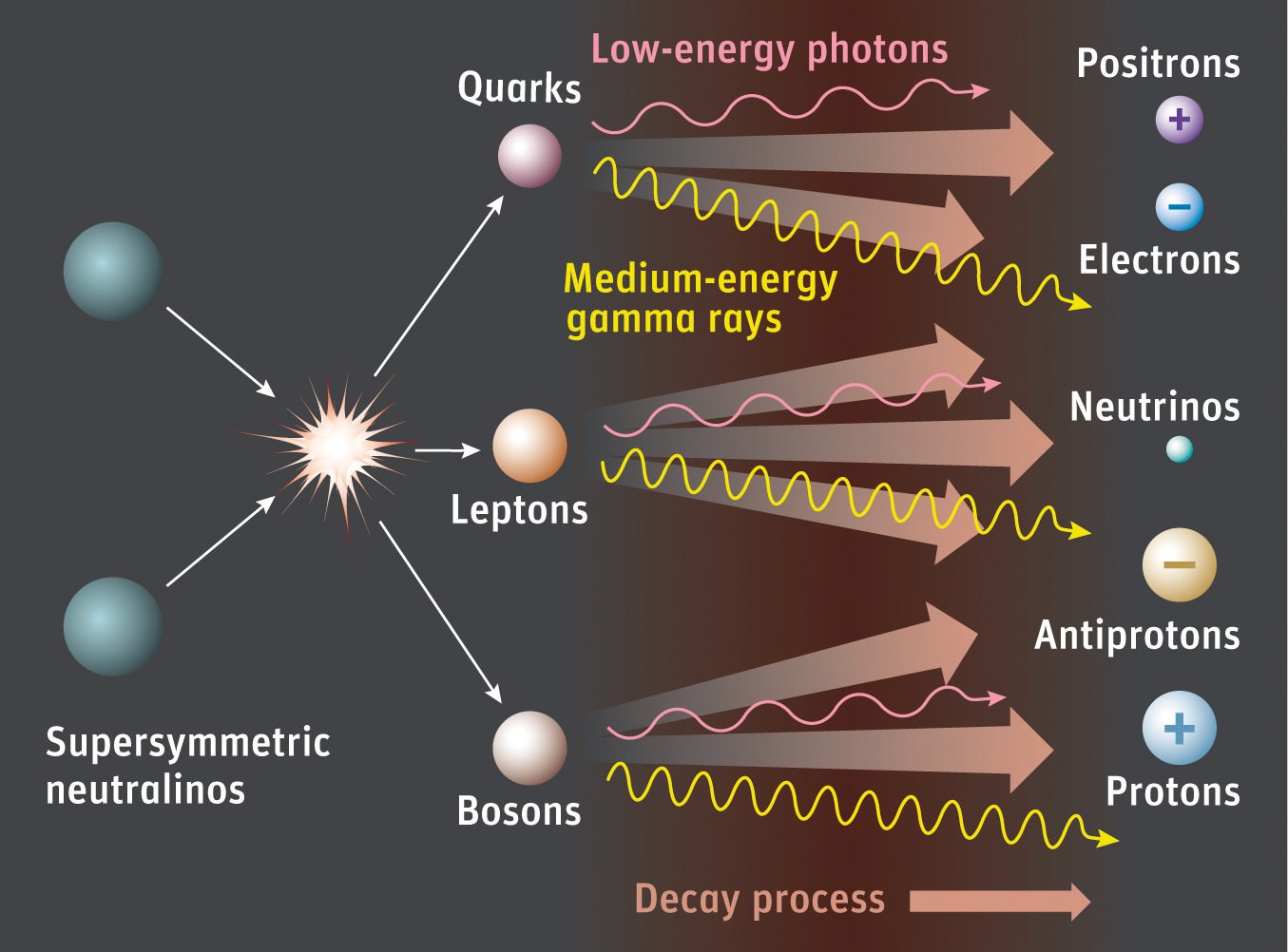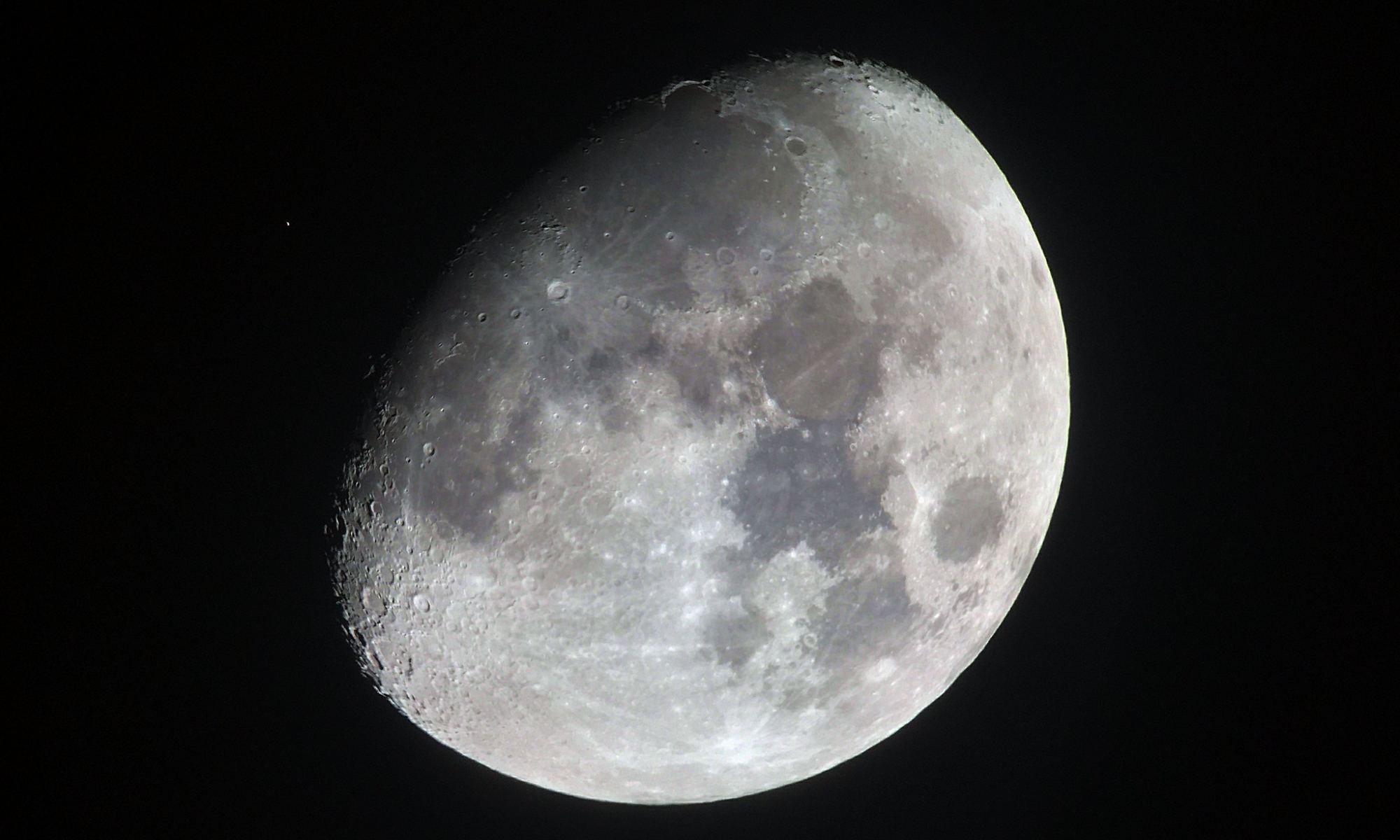The full, weird story of the quantum world is much too large for a single article, but the period from 1905, when Einstein first published his solution to the photoelectric puzzle, to the 1960’s, when a complete, well-tested, rigorous, and insanely complicated quantum theory of the subatomic world finally emerged, is quite the story.
Continue reading “Why Quantum Mechanics Defies Physics”We Owe Our Lives to the Moon
Life appeared on Earth through a series of lucky coincidences, and that luck started with our Moon. None of the other planets of the inner solar system have significant moons. Space is lonely around Mercury and Venus. Mars does have two small moons, Phobos and Deimos (Fear and Despair, befitting companions for the God of War), but those are simply captured asteroids, lassoed in the not-too-distant past and doomed to eventually come close enough to their unloving parent to be torn to shreds by gravitational forces.
Continue reading “We Owe Our Lives to the Moon”How Supersymmetry Saved String Theory

String theory, like most revolutions, had humble origins. It started all the way back in the 1960’s as an attempt to understand the workings of the strong nuclear force, which had only recently been discovered. Quantum field theory, which had been used successfully to explain electromagnetism and the weak nuclear force, wasn’t seeming to cut it, and so physicists were eager for something new.
Continue reading “How Supersymmetry Saved String Theory”Holograms Might Save Physics

Even though the guts of General Relativity are obtusely mathematical, and for decades was relegated to math departments rather than proper physics, you get to experience the technological gift of relativity every time you navigate to your favorite restaurant. GPS, the global positioning system, consists of a network of orbiting satellites constantly beaming out precise timing data. Your phone compares those signals to figure out where you are on the Earth. But there is a difference in spacetime between the surface of the Earth and the orbit of the satellites. Without taking general relativity into account, your navigation would simply be incorrect, and you’d be late for dinner.
Continue reading “Holograms Might Save Physics”Why the Universe Might be a Hologram

A quarter century ago, physicist Juan Maldacena proposed the AdS/CFT correspondence, an intriguing holographic connection between gravity in a three-dimensional universe and quantum physics on the universe’s two-dimensional boundary. This correspondence is at this stage, even a quarter century after Maldacena’s discovery, just a conjecture. A statement about the nature of the universe that seems to be true, but one that has not yet been proven to actually reflect the reality that we live in. And what’s more, it only has limited utility and application to the real universe.
Continue reading “Why the Universe Might be a Hologram”The Strangest Coincidence in Physics: The AdS/CFT Correspondence

Attempts to turn string theory into a workable theory of nature have led to the potential conclusion that our universe is a hologram: that what we perceive as three spatial dimensions is actually composed of only two. The greatest realization of this hologram-led program is a proposal that goes by the awkward and clunky name of the AdS/CFT correspondence, first proposed by string theorist Juan Maldacena in the late 1990’s.
Continue reading “The Strangest Coincidence in Physics: The AdS/CFT Correspondence”Why String Theory Requires Extra Dimensions
String theory found its origins in an attempt to understand the nascent experiments revealing the strong nuclear force. Eventually another theory, one based on particles called quarks and force carriers called gluons, would supplant it, but in the deep mathematical bones of the young string theory physicists would find curious structures, half-glimpsed ghosts, that would point to something more. Something deeper.
Continue reading “Why String Theory Requires Extra Dimensions”Scientists are Recommending IceCube Should be Eight Times Bigger

The IceCube Neutrino Observatory, operated by the University of Wisconsin-Madison (UW-M), located at the Amundsen–Scott South Pole Station in Antarctica, is one of the most ambitious neutrino observatories in the world. Behind this observatory is the IceCube Collaboration, an international group of 300 physicists from 59 institutions in 14 countries. Relying on a cubic kilometer of ice to shield from external interference, this observatory is dedicated to the search for neutrinos. These nearly massless subatomic particles are among the most abundant in the Universe and constantly pass through normal matter.
By studying these particles, scientists hope to gain insight into some of the most violent astrophysical sources – such as supernovae, gamma-ray bursts, merging black holes and neutron stars, etc. The group of scientists tasked with advising the U.S. government on particle physics research is known as the Particle Physics Project Prioritization Panel (P5). In a recent draft report, “Pathways to Innovation and Discovery in Particle Physics,” the P5 team recommended a planned expansion of IceCube. This recommendation is one of several that define the future of astrophysics and particle physics research.
Continue reading “Scientists are Recommending IceCube Should be Eight Times Bigger”Communicating With a Relativistic Spacecraft Gets Pretty Weird

Someday, in the not-too-distant future, humans may send robotic probes to explore nearby star systems. These robot explorers will likely take the form of lightsails and wafercraft (a la Breakthrough Starshot) that will rely on directed energy (lasers) to accelerate to relativistic speeds – aka. a fraction of the speed of light. With that kind of velocity, lightsails and wafercraft could make the journey across interstellar space in a matter of decades instead of centuries (or longer!) Given time, these missions could serve as pathfinders for more ambitious exploration programs involving astronauts.
Of course, any talk of interstellar travel must consider the massive technical challenges this entails. In a recent paper, a team of engineers and astrophysicists considered the effects that relativistic space travel will have on communications. Their results showed that during the cruise phase of the mission (where a spacecraft is traveling close to the speed of light), communications become problematic for one-way and two-way transmissions. This will pose significant challenges for crewed missions but will leave robotic missions largely unaffected.
Continue reading “Communicating With a Relativistic Spacecraft Gets Pretty Weird”The Second Most Energetic Cosmic Ray Ever Found

“Oh My God,” someone must have said in 1991 when researchers detected the most energetic cosmic ray ever to strike Earth. Those three words were adopted as the name for the phenomenon: the Oh-My-God particle. Where did it come from?
Continue reading “The Second Most Energetic Cosmic Ray Ever Found”


